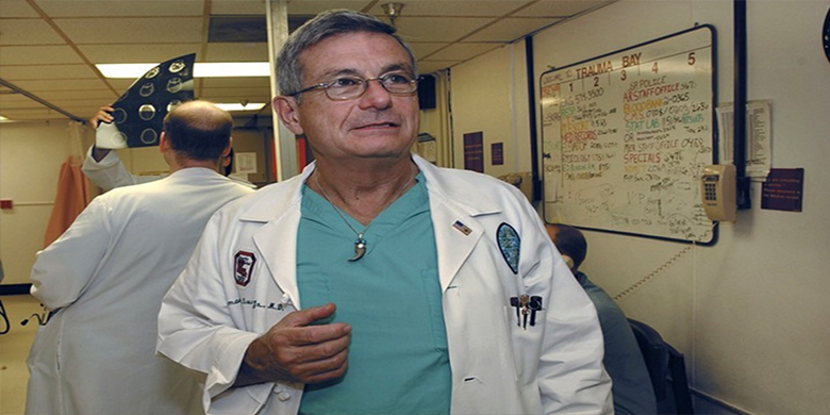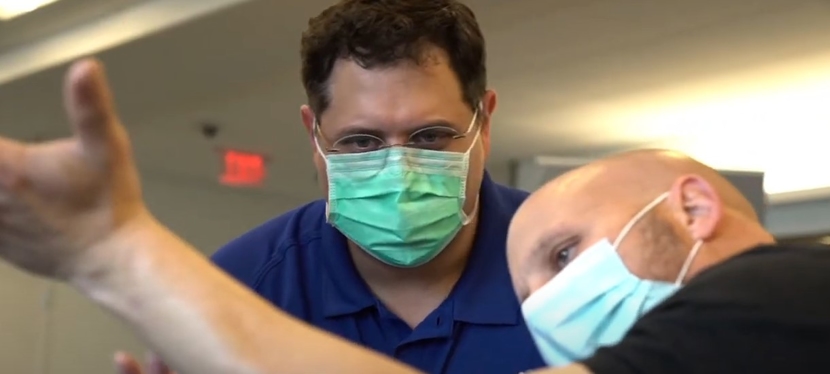What Do you Really Know About your Colon?
- Category: Living Well, Cancer Care, Gastroenterology
- Posted On:
How well do you know your colon?
Cancer of the colon usually develops slowly over several years. Excluding skin cancers, colorectal cancer is the third most common cancer in both men and women in the United States. It’s also the second leading cause of cancer-related deaths overall, according to the American Cancer Society (ACS).
The good news is the death rate from colorectal cancer has been dropping for more than 20 years because of better detection and treatment.
RELATED: Take this simple assessment to learn about your risks for colorectal cancer.
All about the colon:
Your stomach is an organ needed for digestion. The process of digestion involves the mixing of food, its movement through the digestive tract, and the chemical breakdown of the large molecules of food into smaller molecules.
When your food content is completely mixed and liquefied, it passes into the small intestine. By the time the contents pass through the entire small intestine to enter the colon, digestion is complete, and the nutrients have been fully absorbed.
The colon absorbs water and stores food waste. It’s about 5 feet long, and the rectum is the last 6 inches of the large intestine. The colon and rectum have a smooth inner lining made of millions of cells. Changes in these cells can lead to growths in the colon that can become cancer.
Changes that happen in the cells include:
Polyps. These are fleshy clumps of tissue that form on the inner lining of the colon or rectum. Small polyps are usually benign (not cancer). But over time, cells in a type of polyp (known as an adenomatous polyp or adenoma) can change and become cancer.
The longer a polyp is there and the larger a polyp grows, the more likely this is to happen. Over a period of years, polyps can become cancer. These growths should be removed when possible. Removing polyps early may prevent cancer from forming.
Colorectal cancers. These usually start when polyp cells begin growing abnormally. As a cancer tumor grows, it can invade the deeper layers of the colon or rectal wall. In time, cancer can grow beyond the colon or rectum and into nearby organs. It can spread to nearby lymph nodes.
The cancer cells can also travel to other parts of the body. This is known as metastasis. The earlier a cancer tumor is removed, the better the chance of preventing its spread.
So, what can you do to keep your colon in check?
1. Know your risk factors for colorectal cancer.
Factors that increase your risk include:
- A strong family history of colorectal cancer
- Are 50 years of age or older
- Have a personal history of type 2 diabetes, Crohn’s disease, or ulcerative colitis
- Have an inherited genetic syndrome like Lynch syndrome (HNPCC) or familial adenomatous polyposis (FAP)
- Are very overweight
- Are not physically active
- Smoke
- Drink a lot of alcohol
- Eat a lot of red or processed meat
2. Listen to your body.
- Notice a change in bowel habits, such as diarrhea, constipation, or narrowing of the stool, that lasts for more than a few days?
- Have a feeling that you need to have a bowel movement that is not relieved by doing so?
- Seeing rectal bleeding?
- Are your stools dark or have blood in them?
- Feeling cramping or abdominal (belly) pain?
- Experiencing weakness or fatigue?
- What about unintended weight loss?
Many of the symptoms of colorectal cancer can also be caused by something that isn’t cancer, such as infection, hemorrhoids, irritable bowel syndrome, or inflammatory bowel disease.
In many cases, people who have these symptoms do not have cancer. Still, if you have any of these problems, it is a sign that you should go to the doctor so the cause can be found and treated if needed.
3. Get screened!
Screening means looking for a health problem before you have symptoms. During screening for colorectal cancer, your healthcare provider will ask about your health history, examine you, and do one or more tests.
To start, you may have:
Health history questions to answer. Your healthcare provider will ask about your health history. Mention if a family member has had colon cancer or polyps. Also, mention any health problems you have had in the past.
Digital rectal exam (DRE). During a DRE, the healthcare provider inserts a lubricated gloved finger into the rectum. The test is painless and takes less than a minute. This test alone is not enough to screen for colorectal cancer. You will also need one of the below tests:
Fecal occult blood test (FOBT) or fecal immunochemical test (FIT). These tests check for blood in stool that you can’t see (hidden or occult blood). Hidden blood may be a sign of colon polyps or cancer. A small sample of stool is tested for blood in a laboratory. Most often, you collect this sample at home using a kit your healthcare provider gives you. Follow the instructions carefully for using this kit. You might need to not eat certain foods and not take certain medicines before the test, as directed.
Stool DNA test. This test looks for DNA changes in cells in the stool. These DNA changes might be signs of cancer. It also looks for hidden blood in the stool. For this test, you collect an entire bowel movement. This is done using a special container put in the toilet. The sample is then sent to a lab for testing.
Barium enema with contrast (double-contrast barium enema). This test uses X-rays to create images of the entire colon and rectum. The day before this test, you will need to do a bowel prep to clean out the colon and rectum. A bowel prep is a liquid diet plus strong laxatives or enemas. You will be awake for the test, but you may be given medicine to help you relax. At the start of the test, a healthcare provider who specializes in imaging tests (radiologist) places a soft tube into the rectum. The tube is used to fill the colon with a contrast liquid (barium) and air. This can be uncomfortable for some people. The liquid helps the colon show up clearly on the X-rays. Because the test uses X-rays, it exposes you to a small amount of radiation.
Virtual colonoscopy. This exam is also called a CT colonography. It uses a series of X-ray photographs to create a 3-D view of the colon and rectum. The day before the test, you will need to do a bowel prep to clean out your colon. Your healthcare provider will give you instructions on how to do this. During the procedure, you will lie on a table that is part of a special X-ray machine called a CT scanner. A small tube will be placed into your rectum to fill the colon and rectum with air. This can be uncomfortable for some people. Then, the table will move into the machine and pictures will be taken of your colon and rectum. A computer will combine these photos to create a 3-D picture. Because the test uses X-rays, it exposes you to a small amount of radiation.
Scope exams. Here are 2 types of scope exams:
Colonoscopy. This test can be used to find and remove polyps anywhere in the colon or rectum. The day before the test, you will do a bowel prep. This is a liquid diet plus a strong laxative solution or an enema. The bowel prep will cleanse your colon. You will be given instructions for this. Just before the test, you are given a medicine to make you sleepy. Then, a long, flexible, lighted tube called a colonoscope is gently inserted into the rectum and guided through the entire colon. Images of the colon are viewed on a video screen. Any polyps that are found are removed and sent to a lab for testing. If a polyp can’t be removed, a sample of tissue is taken and the polyp might be removed later during surgery. You will need to bring someone with you to drive you home after this test. Colonoscopy is the only screening test that lets your healthcare provider see the entire colon and rectum. This test also lets your healthcare provider remove any pieces of tissue that need to be looked at by a lab. If something suspicious is found using any other tests, you will likely need a colonoscopy.
Sigmoidoscopy. This test is similar to colonoscopy but focuses only on the sigmoid colon and rectum. As with colonoscopy, bowel prep must be done the day before this test. It might not need to be as complete as the bowel prep for a colonoscopy. You are awake during the procedure, but you may be given medicine to help you relax. During the test, the healthcare provider guides a thin, flexible, lighted tube called a sigmoidoscope through your rectum and lower colon. The images are displayed on a video screen. Polyps are removed, if possible, and sent to a lab for testing.
As always, talk with your primary care doctor about getting screened for colorectal cancer or if you experience any symptoms.
Learn more about primary care at University Medical Center: umcno.org/primarycare


